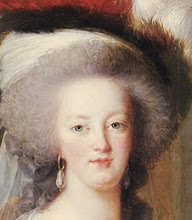Chinese history is incredibly long and incredibly fascinating--I was tempted to do a post on some of my favorite older Chinese history books, but I thought I would go for a little something different instead and share some of the more interesting Chinese history book releases for 2012. Personally, I'm most excited for the new book on the Forbidden City and the study on women's poetry form the late imperial period.
The following descriptions are all from
Amazon.com
The Forbidden City by Jean-Paul Descroches, Guillaume Fonkenell and Isabelle Lemaistre [June 1, 2012]
An enigmatic locale that has long fascinated the West, the Forbidden City of Peking is explored in this chronicle. It reveals how the city has always been reserved for imperial families and their circles of acquaintances only, remaining taboo to the Chinese people, who were not allowed to approach it nor even look at it. It explains what it took to realize what is regarded as the most important architectural project in China, and documents how its construction spanned 14 years and required over a million workers. More than five centuries of the city’s history is revisited, detailing an array of magnificent treasures secretly passed down through its generations. Focusing on several exceptional pieces, the examination places them beside recognizably Western works, and reflects on the Far East’s remarkable influence on the other side of the world.
The Seventies: Recollecting a Forgotten Time in China by Theodore Huters [July 3, 2012]
The Seventies (Qishi niandai) is a remarkable compendium of essays recollecting those years originally edited by the poet Bei Dao and the writer/editor Li Tuo, first published in Hong Kong in late 2008. Among the collection's most notable features is its powerful ability to reach back and illuminate that strange decade, now mostly thought of as an interregnum between a just preceding Maoist frenzy with its intense socialism and the ascent of Deng Xiaoping and his new era at the very end of the period. It was also, however, the formative time in the growth of the group of intellectuals, writers and artists -- almost all born after 1949 -- who came to dominate Chinese cultural life by the turn of the century. As "educated urban youth" (zhishi qingnian), many of the writers represented here were at once the most active participants and most evident victims of the Great Proletarian Cultural Revolution that spanned the years between 1966 and 1976. The works selected and translated here provide a series of vivid impressions of what has turned out to be a key period in modern Chinese social, intellectual and artistic life.
The Silk Road: A New History by Valerie Hansen [August 6, 2012]
The Silk Road is as iconic in world history as the Colossus of Rhodes or the Suez Canal. But what was it, exactly? It conjures up a hazy image of a caravan of camels laden with silk on a dusty desert track, reaching from China to Rome. The reality was different--and far more interesting--as revealed in this new history. ... For centuries, key records remained hidden-sometimes deliberately buried by bureaucrats for safe keeping. But the sands of the Taklamakan Desert have revealed fascinating material, sometimes preserved by illiterate locals who recycled official documents to make insoles for shoes or garments for the dead. Hansen explores seven oases along the road, from Xi'an to Samarkand, where merchants, envoys, pilgrims, and travelers mixed in cosmopolitan communities, tolerant of religions from Buddhism to Zoroastrianism. There was no single, continuous road, but a chain of markets that traded between east and west. China and the Roman Empire had very little direct trade. China's main partners were the peoples of modern-day Iran, whose tombs in China reveal much about their Zoroastrian beliefs. Silk was not the most important good on the road; paper, invented in China before Julius Caesar was born, had a bigger impact in Europe, while metals, spices, and glass were just as important as silk. Perhaps most significant of all was the road's transmission of ideas, technologies, and artistic motifs.
Women's Poetry of Late Imperial China: Transforming the Inner Chambers by Xiaorong Li [September 1, 2012]
This study of poetry by women in late imperial China examines the metamorphosis of the trope of the "inner chambers" (gui), to which women were confined in traditional Chinese households, and which in literature were both a real and an imaginary place. Originally popularized in sixth-century "palace style" poetry, the inner chambers were used by male writers as a setting in which to celebrate female beauty, to lament the loneliness of abandoned women, and by extension, to serve as a political allegory for the exile of loyal and upright male ministers spurned by the imperial court. Female writers of lyric poetry (ci) soon adopted the theme, beginning its transition from male fantasy to multidimensional representation of women and their place in society, and eventually its manifestation in other poetic genres as well.
Emerging from the role of sexual objects within poetry, late imperial women were agents of literary change in their expansion and complication of the boudoir theme. While some take ownership and de-eroticizing its imagery for their own purposes, adding voices of children and older women, and filling the inner chambers with purposeful activity such as conversation, teaching, religious ritual, music, sewing, childcare, and chess-playing, some simply want to escape from their confinement and protest gender restrictions imposed on women. Women's Poetry of Late Imperial China traces this evolution across centuries, providing and analyzing examples of poetic themes, motifs, and imagery associated with the inner chambers, and demonstrating the complication and nuancing of the gui theme by increasingly aware and sophisticated women writers.
















